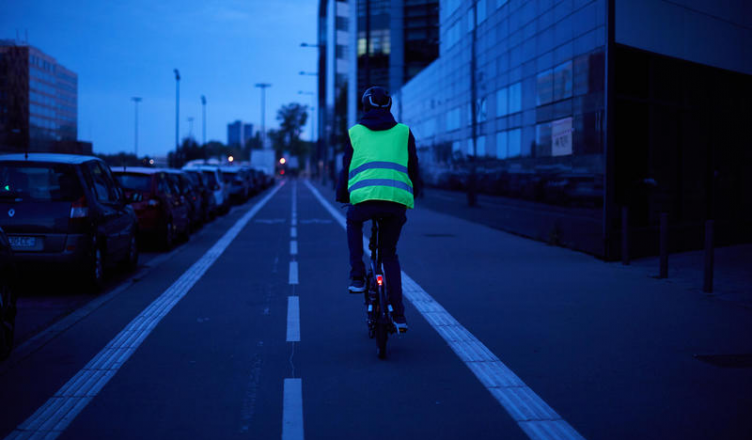While the competent safety authorities regularly warn that cycling should be cautious, safe and tolerant, almost three-quarters of cyclists still violate traffic rules. So how to make cycling more responsible and safe?
A survey of cyclists observed two years ago by the Traffic Safety Agency found that nearly three-quarters of cyclists are in breach of traffic rules, and more than one in four cyclists are committing serious violations. The most common violations include the inappropriate crossing of the roadway, driving in the opposite direction, and driving in a red traffic light. The list of common misdemeanors, which are increasingly found in the notebooks of police officers and police officers, also include pedestrian threats of pavement driving and the use of a mobile phone while cycling.
Awareness and a good example
Until the end of May, a national preventive action for greater cyclist safety is underway, led by the Public Agency for Transport Safety in cooperation with the Police, which will in the meantime exercise tight control, the Ministry of Infrastructure and the Ministry of Education, Science and Sport, joining also many NGOs. The purpose of the action is to remind cyclists of compliance with traffic rules and responsible traffic behavior and to increase the use of safety helmets, and on the other hand to alert other road users to the increased number of cyclists on the road. Particular attention will also be paid to the dangers of using a mobile phone and headphones to listen to music from cyclists, as both activities directly affect the perception of the surroundings and traffic, which increases the risk of a road accident.
In May, most schools around the country will organize bicycle training courses and safe cycling courses. On this occasion, an informative leaflet entitled Safe Cycle in Traffic and a preventative video film on safe cycling was created, intended for use by teachers, representatives of municipal councils for preventive and educational education and others for education and awareness.
Cyclists are also among the causes and participants of accidents
The number of cyclists has been steadily increasing in recent years, both in and outside urban areas. Cyclists are already among the more vulnerable groups of road users, and their numbers are increasing with the number and misuse of the bicycle. Motor and one-way motor vehicle drivers often overlook them, further increasing the possibility of a car accident and consequently serious injuries.
An analysis of the safety and participation of cyclists in road accidents for 2018 has shown that the vast majority (as much as 86%) of road accidents involving cyclists occur in settlements so that effective action at the local level is necessary.
Riders (for the most part) decide their destiny
For our safety, cyclists can do the most for themselves by following road rules. It is important to ride the bike along a bike lane or trail if there is no bike lane and to drive along the right edge of the road in the direction of travel.
When cycling, we follow the traffic rules and regulations applicable to drivers, priority rules, traffic signs and other signage. When driving, we should also try to anticipate the behavior of other road users, as this can prevent many unloved events. When turning at intersections, we indicate the direction with our hands, sort ourselves properly and follow the rules of preference. We never drive in the opposite direction as other drivers do not expect us there. At night and dusk, however, we urgently use lights and reflective bodies to be visible and visible earlier.
The equipment and the bike should offer greater safety
Research has shown that a protective cycling helmet contributes significantly to increased safety by reducing the severity of injuries and head injuries from 40% to as much as 70%. The use of a cycling helmet is mandatory for children and adolescents up to the age of 18, and its use is recommended for other cyclists, both for daily and recreational cycling, as it contributes significantly to the safety of the cyclist.
Clear head protects helmet!
Bicycle helmets must also be worn by child passengers on a bicycle or when riding on a driver and is also recommended for rollerblading, skateboarding, scooter use, and various electrical devices. When using the helmet, it must be ensured that the helmet is of a suitable size about the head size, that it is firmly attached to the head so that the front edge extends over two fingers above the eyebrows and that the straps on the helmet are fastened and tightened. In addition to the helmet, it is advisable to wear light-colored clothing with reflective fabric or a reflective vest when riding a bicycle, so that riders of other road users may notice it earlier.
Each rider is also responsible for the technical suitability of his bike and the use of protective equipment. Before cycling, especially in the spring, it is important to first check the technical integrity of the bike.
The bike must have a perfect front and rear brake, white front light to illuminate the road and a red rear light, pedal or side reflectors, a bell, properly inflated tires, and a properly adjusted handlebar and seat height.
